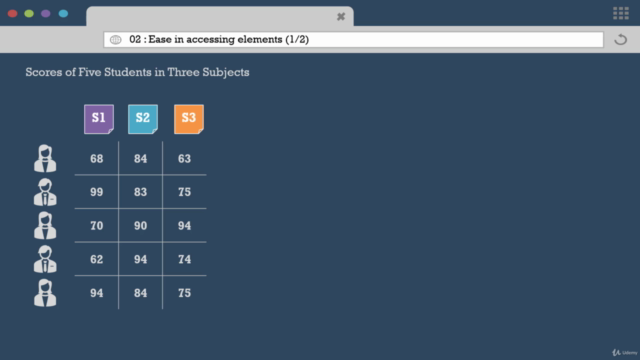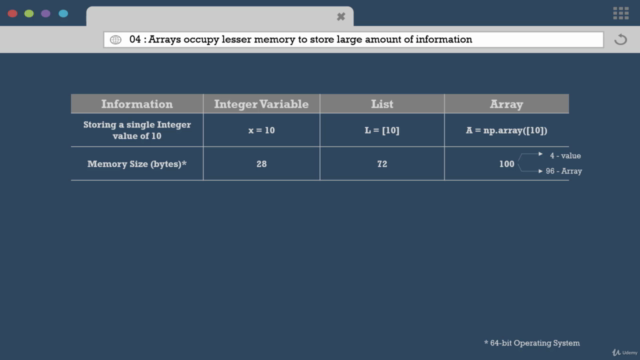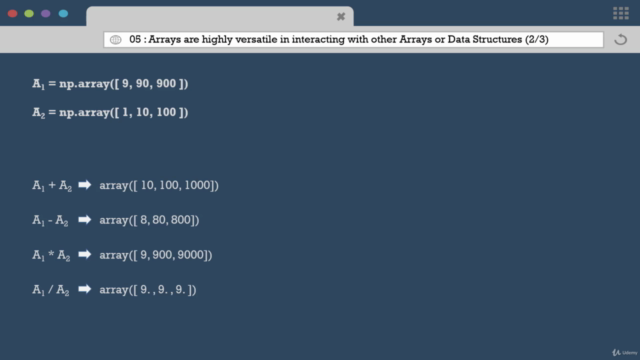Beginner's Guide to Python Arrays

Why take this course?
🎓 Course Title: Beginner's Guide to Python Arrays
🚀 Course Headline: Dive into the World of Data Structures with Python Arrays – Your Gateway to Mastering Data Operations!
Course Description:
Are you ready to unlock the full potential of data processing in Python? Arrays are more than just a list of variables; they are a cornerstone for efficient data manipulation and a critical component in data science. In this comprehensive course, "Beginner's Guide to Python Arrays," you'll explore the intricacies of arrays as powerful data structures that can revolutionize the way you handle data. 🌟
Why Learn Python Arrays?
- Faster Processing: Arrays allow for rapid computation and are particularly useful when dealing with large datasets.
- Compact Memory Usage: They optimize memory allocation, storing large amounts of uniform data with minimal overhead.
- Ease of Access: Retrieve or modify your data elements effortlessly without the complexity of linked lists or other complex structures.
- Simplified Operations: Perform complex operations with concise code that's both readable and efficient.
For those who have dabbled in Pandas DataFrames, you know the versatility and power they offer for data analysis. Arrays are the foundational block behind this, enabling similar operations with a simpler framework. They are indispensable when it comes to running Machine Learning algorithms using libraries like Scipy and Scikit-learn.
What You Will Learn:
- Understanding Arrays as Data Containers: Get a grasp of how arrays work as containers for data in Python.
- Visualizing Multidimensional Arrays: Learn to visualize 2D, 3D, and higher-dimensional arrays for better understanding.
- Array Indexing and Slicing: Master indexing and slicing techniques in 2D and 3D arrays with ease.
- Basic Operations Using Numpy Arrays: Perform essential operations using NumPy, the fundamental package for scientific computing.
Course Highlights:
- Intuitive Learning: Develop a strong foundation of understanding arrays from scratch.
- Practical Applications: Apply your knowledge to real-world data operations and analysis.
- Confidence Building: Gain the confidence to explore more advanced topics related to Numpy.
By the end of this course, you will not only be proficient in using Python arrays but also equipped with the skills to handle datasets effectively and lay a solid groundwork for venturing into the realm of data science and machine learning. 📊✨
Join us on this journey to become a data wizard with Python Arrays! Enroll now and start your transformation into a data guru today! 📚🚀
What Students Are Saying:
- "This course demystified arrays for me. I can't believe how much easier data manipulation has become!" - Alex L.
- "Gaurav Singh's teaching style is clear, concise, and filled with practical examples. Highly recommend!" - Priya S.
- "I struggled with understanding arrays, but this course made it all click. It's a game-changer for my data analysis work!" - Sam R.
Don't miss out on the opportunity to elevate your Python skills and become a master of data structures. Sign up for "Beginner's Guide to Python Arrays" now and take your first step towards data mastery! 🎓🎉
Course Gallery




Loading charts...